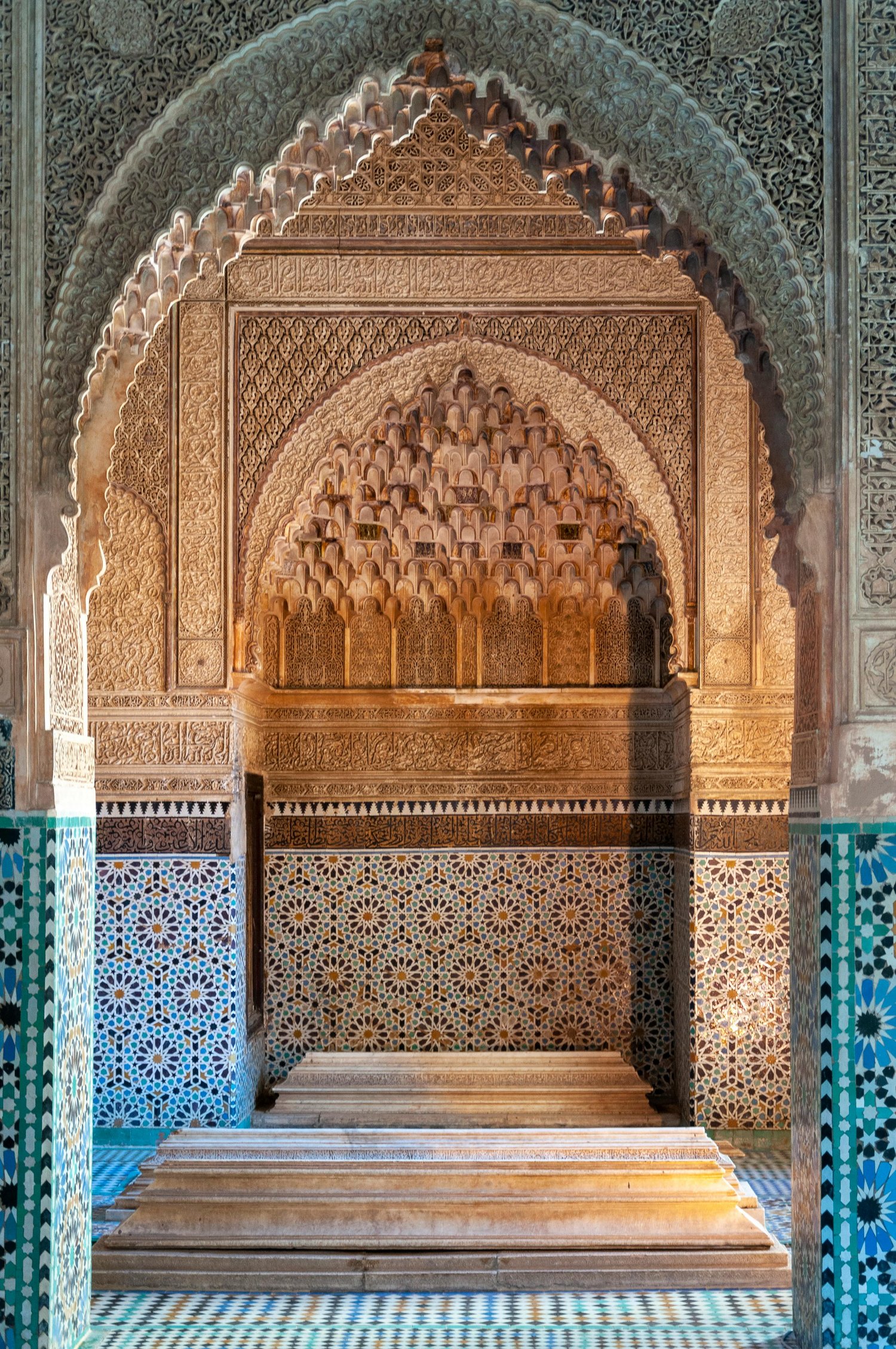Morocco's rich cultural tapestry and stunning architecture bear the unmistakable imprint of Andalusian influence—a legacy that spans centuries and remains vibrantly alive today. The Andalusian impact on Moroccan identity represents one of history's most fascinating cultural exchanges, blending Islamic, European, and North African elements into something uniquely Moroccan. This profound influence came from Muslim and Jewish refugees fleeing the Iberian Peninsula during the Reconquista, bringing with them sophisticated art forms, architectural techniques, culinary traditions, and musical styles that would forever transform Morocco's cultural landscape.
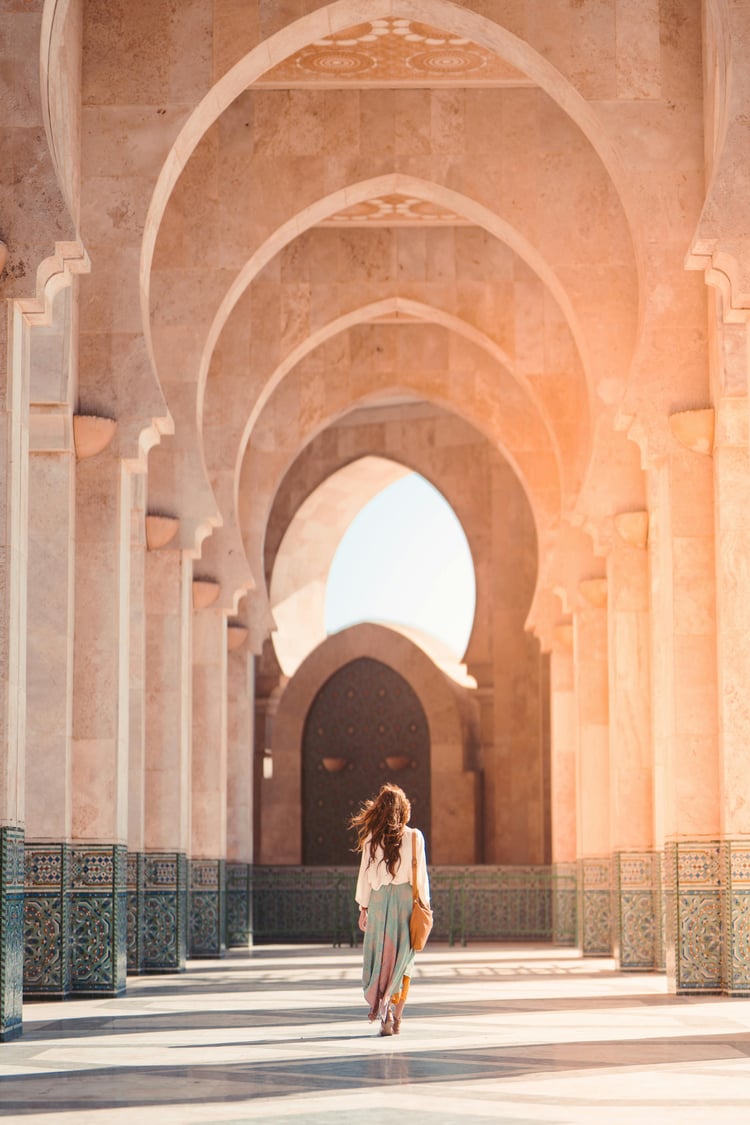
Historical Context: From Al-Andalus to Morocco
The Rise and Fall of Al-Andalus
The story of Andalusian influence in Morocco begins with Al-Andalus—Muslim-ruled territories in the Iberian Peninsula that existed from 711 to 1492 CE. During this period, Al-Andalus flourished as a center of learning, art, and cultural exchange where Muslims, Christians, and Jews coexisted in relative harmony, creating a sophisticated civilization that far surpassed much of medieval Europe.
The Reconquista—the Christian reconquest of the Iberian Peninsula—gradually pushed south over centuries, culminating in the fall of Granada, the last Muslim stronghold, in 1492. This political upheaval triggered waves of migration across the Mediterranean as Muslims and Jews fled persecution.
Waves of Migration
The exodus of Andalusians to Morocco occurred in several distinct waves:
- 8th-9th centuries: Initial settlements following the Umayyad conquest
- 11th-13th centuries: Migrations during the Almoravid and Almohad dynasties
- 15th-17th centuries: Major exodus following the fall of Granada and subsequent expulsions
Morocco, with its geographic proximity and cultural similarities, became a natural refuge. Sultan Abu al-Hassan Ali welcomed these refugees, recognizing the value of their skills and knowledge. Many settled in cities like Tetouan (which was rebuilt by Andalusian refugees), Fez, Rabat, and Salé.
These newcomers, known as Moriscos or Andalusians, brought with them advanced knowledge in agriculture, irrigation, craftsmanship, architecture, medicine, literature, and music. Their integration into Moroccan society wasn't always smooth, but their cultural contributions were undeniable and transformative.
Architectural Influences: A Visual Legacy
Perhaps the most visible and enduring Andalusian contribution to Morocco lies in its architecture. The distinctive elements of Andalusian design—intricate geometric patterns, horseshoe arches, ornate plasterwork, and colorful zellij tilework—have become defining features of traditional Moroccan buildings.
Zellij Tilework: A Geometric Symphony
Zellij—geometric mosaic tilework composed of individually hand-cut pieces—represents one of the most distinctive elements of Moroccan-Andalusian architecture. This labor-intensive art form originated in Al-Andalus and was perfected in Morocco, where it continues to be practiced using traditional methods.
Key characteristics of zellij include:
- Complex geometric patterns symbolizing infinity and divine perfection
- Vibrant color palettes dominated by blue, green, yellow, and white
- Application on floors, walls, fountains, tables, and other surfaces
The finest examples can be found in buildings like the Attarine Madrasa in Fez and the Ben Youssef Madrasa in Marrakech, where thousands of individual tiles form mesmerizing patterns that seem to shift and transform as you move through the space.
The Riad: Andalusian Home Design
The traditional Moroccan riad—a house built around a central courtyard garden—is a direct architectural inheritance from Al-Andalus. The word "riad" itself comes from the Arabic "ryad," meaning garden. This design created private, inward-facing homes that were perfectly adapted to both the climate and cultural needs for privacy.
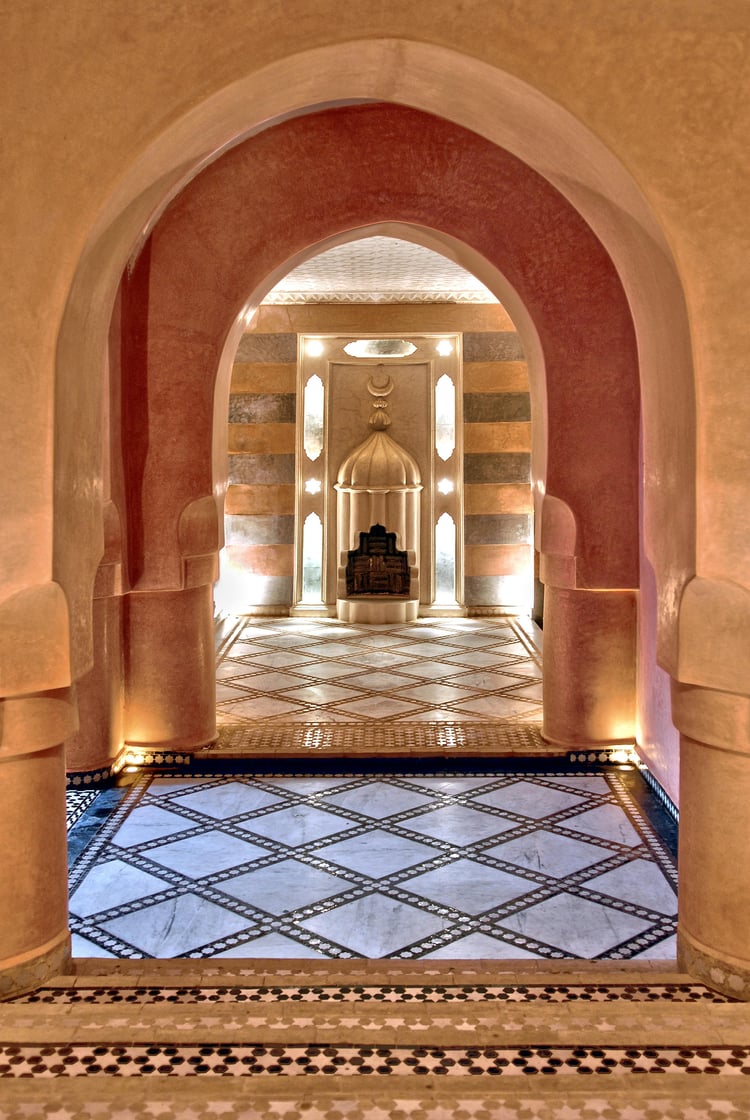
Elements of a traditional riad include:
- Central courtyard with fountain and garden
- Four-sided layout representing the four elements
- Strategic use of water for cooling and aesthetic purposes
- Rooms opening onto the courtyard rather than outside
- Decorative interior spaces with intricate plasterwork and tilework
Today, many historic riads have been restored as boutique hotels, offering visitors the chance to experience this architectural heritage firsthand.
Regional Variations of Andalusian Influence
Andalusian architectural influence manifests differently across Morocco:
Tetouan: The Little Granada
Tetouan holds special significance in the Andalusian-Moroccan connection. Rebuilt by refugees from Granada in the late 15th century, its medina (UNESCO World Heritage site) is often called "Little Granada" and features the most direct and pure Andalusian architectural style. The city's white-washed buildings with wrought-iron balconies could easily be mistaken for streets in southern Spain.
Fez: Intellectual and Artistic Center
As Morocco's cultural and intellectual heart, Fez attracted many educated Andalusian refugees. The University of Al-Qarawiyyin benefited greatly from Andalusian scholars, while the city's architecture shows their influence in sites like:
- Dar Batha: A former palace housing Andalusian-inspired art
- The Andalusian Mosque: Built by refugees in the 9th century
- Numerous foundouks (merchant inns) featuring Andalusian design elements
Rabat-Salé: Twin Cities of Andalusian Legacy
The twin cities across the Bou Regreg River became major centers for Andalusian refugees, especially following the 17th-century expulsions. The Andalusian influence is particularly evident in:
- The Kasbah des Oudaias in Rabat
- Traditional homes in the Salé medina
- Distinctive blue and white pottery techniques
Architectural Elements: The Andalusian Toolkit
Beyond these regional expressions, specific architectural features of Andalusian origin have become standard throughout Moroccan design:
- Horseshoe arches: These distinctive arches, wider at the base than at the top, create elegant transitions between spaces
- Muqarnas: Honeycomb-like decorative vaulting adding dimension to ceilings and cornices
- Carved plasterwork (stucco): Intricate relief patterns carved directly into wet plaster
- Carved cedarwood: Elaborate ceiling designs and doors featuring geometric and floral motifs
- Interior gardens: Designed to cool buildings naturally and provide tranquil retreats
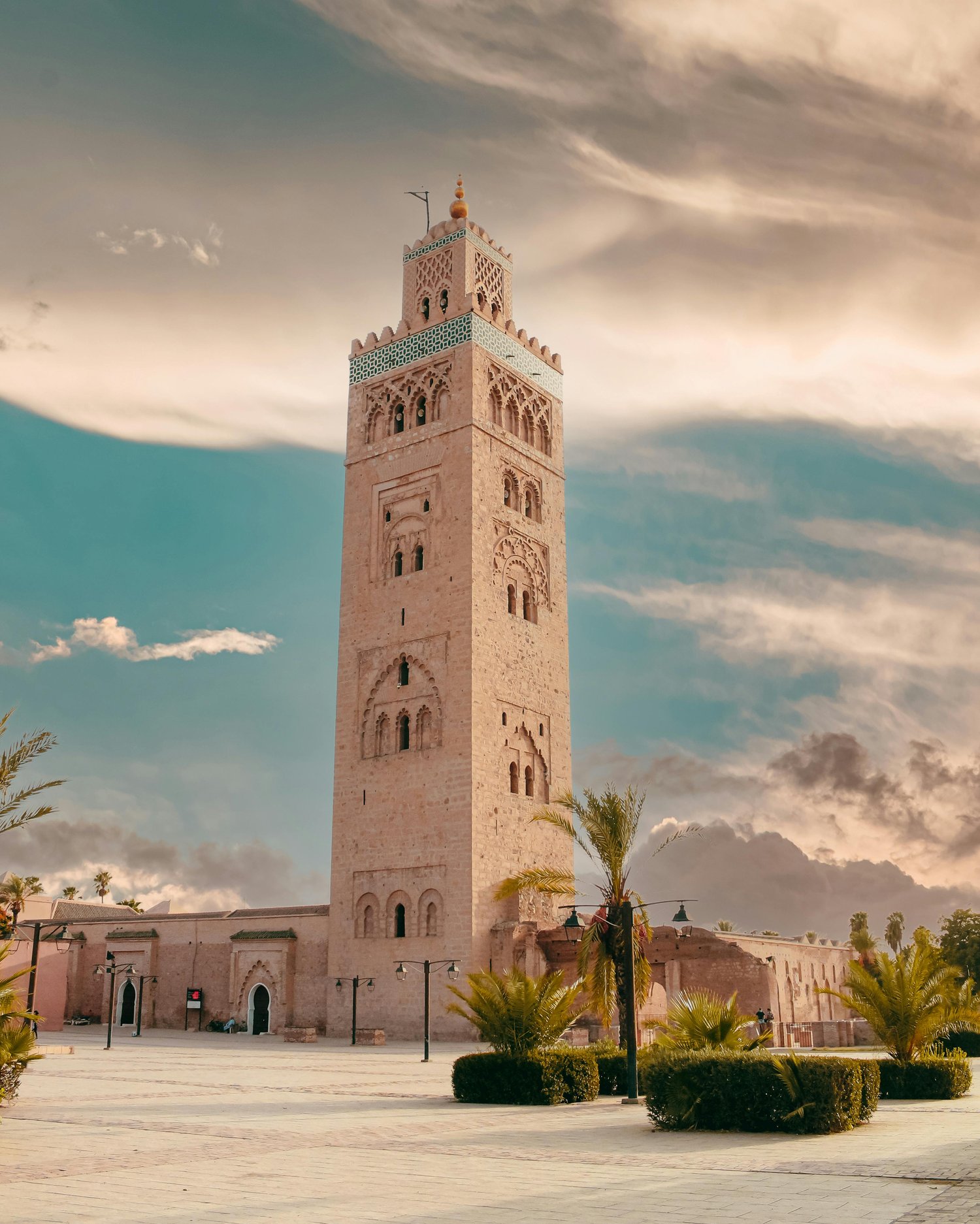
Cultural Influences: Beyond Buildings
The Andalusian impact extends far beyond architecture, permeating numerous aspects of Moroccan cultural life.
Musical Traditions: The Legacy of Al-Andalus
Perhaps no cultural form better preserves the Andalusian heritage than Moroccan music. Andalusian classical music—known locally as al-âla or tarab al-andalusi—remains a treasured art form performed at weddings, cultural festivals, and concerts.
This musical tradition features:
- Complex modal systems (nawbat)
- Distinctive string instruments like the oud, rebab, and qanun
- Poetic lyrics often derived from medieval Andalusian poetry
- Orchestral ensembles with strict musical structures
Regional variations developed in different Moroccan cities, with notable traditions in Fez, Tetouan, Rabat, and Oujda. Each school maintains particular styles and repertoires, though all trace their lineage to Al-Andalus.
Culinary Traditions: A Flavorful Exchange
Moroccan cuisine owes much to Andalusian influence, particularly in its sophisticated blending of sweet and savory flavors, use of fruit in meat dishes, and elaborate pastry-making traditions.
Specifically Andalusian culinary contributions include:
- The combination of honey and meat in dishes like pastilla
- Advanced confectionery techniques in cookies like kaab el ghazal
- Introduction of new ingredients like eggplant, citrus, and various spices
- Elaborate preparation methods for festive dishes
Many traditional Moroccan dishes like bastilla (savory pie with layers of thin pastry) and various almond-based sweets trace their origins directly to Al-Andalus.
Craft Traditions: Preserving Ancient Techniques
Andalusian refugees brought sophisticated craft techniques that revolutionized Moroccan artisanship:
- Leatherwork: Techniques for tanning and tooling leather, particularly evident in the famous leather production of Fez
- Ceramics: Advanced pottery and glazing methods, especially the distinctive blue pottery of Fez
- Textile production: Silk weaving and embroidery techniques
- Metalwork: Intricate designs in copper, brass, and silver
- Woodworking: Detailed inlay and carving methods
These crafts were often practiced in guild systems established by Andalusian artisans, many of which continue to operate in Morocco's historical medinas today.
Language and Literature: Words Across the Strait
The Andalusian influence on Moroccan Arabic dialects remains evident, particularly in northern regions. Distinctive vocabulary, pronunciation patterns, and expressions in cities like Tetouan and Chefchaouen reflect their Andalusian heritage.
Literary traditions also crossed the Mediterranean, with forms like the zajal and muwashshah poetry styles incorporated into Moroccan cultural expression. Andalusian scholarly works in medicine, astronomy, philosophy, and religious studies enriched Morocco's intellectual tradition, particularly at centers of learning like the University of Al-Qarawiyyin in Fez.
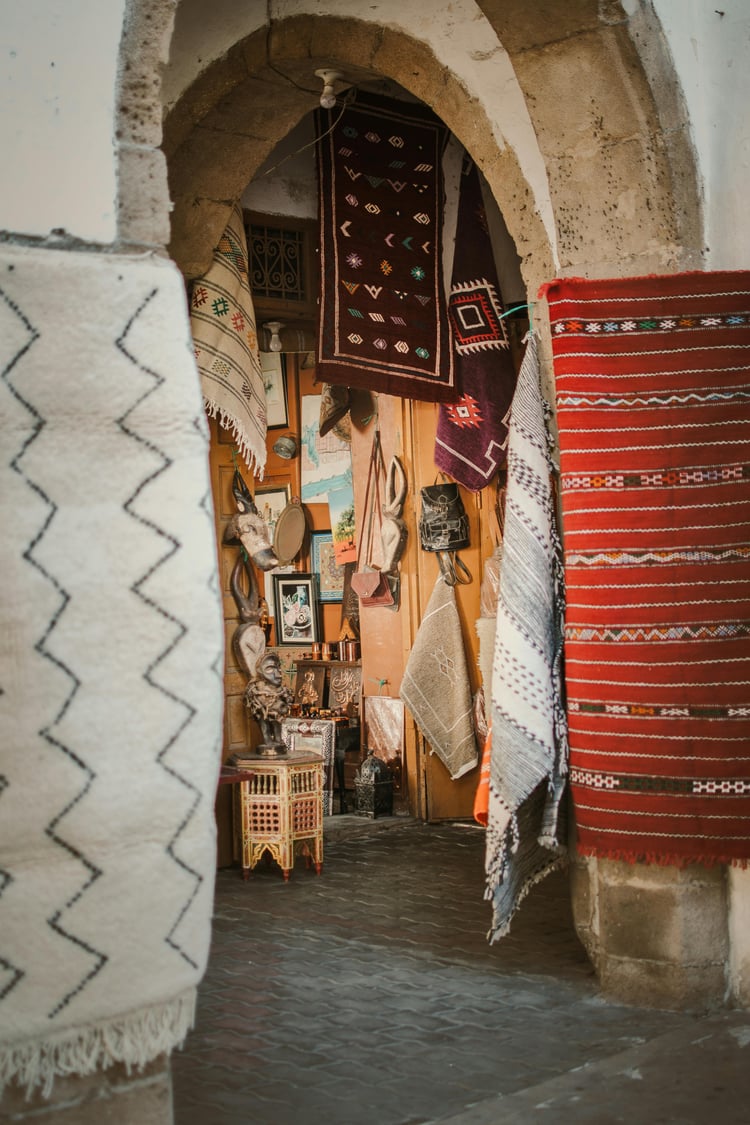
Modern Legacy: Andalusian Influence in Contemporary Morocco
Tourism and Cultural Identity
Today, Morocco's Andalusian heritage has become central to its tourism industry and national identity. Cities like Tetouan market themselves explicitly as centers of Andalusian heritage, while restored riads throughout the country offer visitors an immersive experience of this architectural tradition.
Annual festivals celebrate Andalusian music, crafts, and cuisine, keeping these traditions alive while introducing them to new audiences. The Andalusian Gardens in Rabat stand as a testament to this shared heritage, as do numerous museums dedicated to preserving artifacts and knowledge from this culturally rich period.
Preservation Efforts and Modern Adaptations
While honoring Berber culture and embracing independence following the colonial era, Morocco has made significant efforts to preserve its Andalusian heritage. UNESCO World Heritage designations protect historical sites in Tetouan, Fez, and other cities with strong Andalusian connections.
Contemporary Moroccan architects and designers continue to draw inspiration from Andalusian elements, adapting traditional features for modern buildings. New luxury hotels, government buildings, and even private homes incorporate zellij tilework, horseshoe arches, and courtyard designs that echo this historical influence.
Cultural Bridge Between Continents
The Andalusian legacy in Morocco serves as a powerful reminder of historical connections between Europe and North Africa. Cultural exchange programs between Morocco and Spain celebrate this shared heritage, while researchers from both sides of the Mediterranean collaborate to study and preserve Andalusian traditions.
In many ways, Morocco serves as a living museum of Andalusian culture—preserving elements that have been lost or transformed in their places of origin. This preservation role has taken on new significance in an era of globalization, as Morocco balances modernization with cultural heritage preservation.
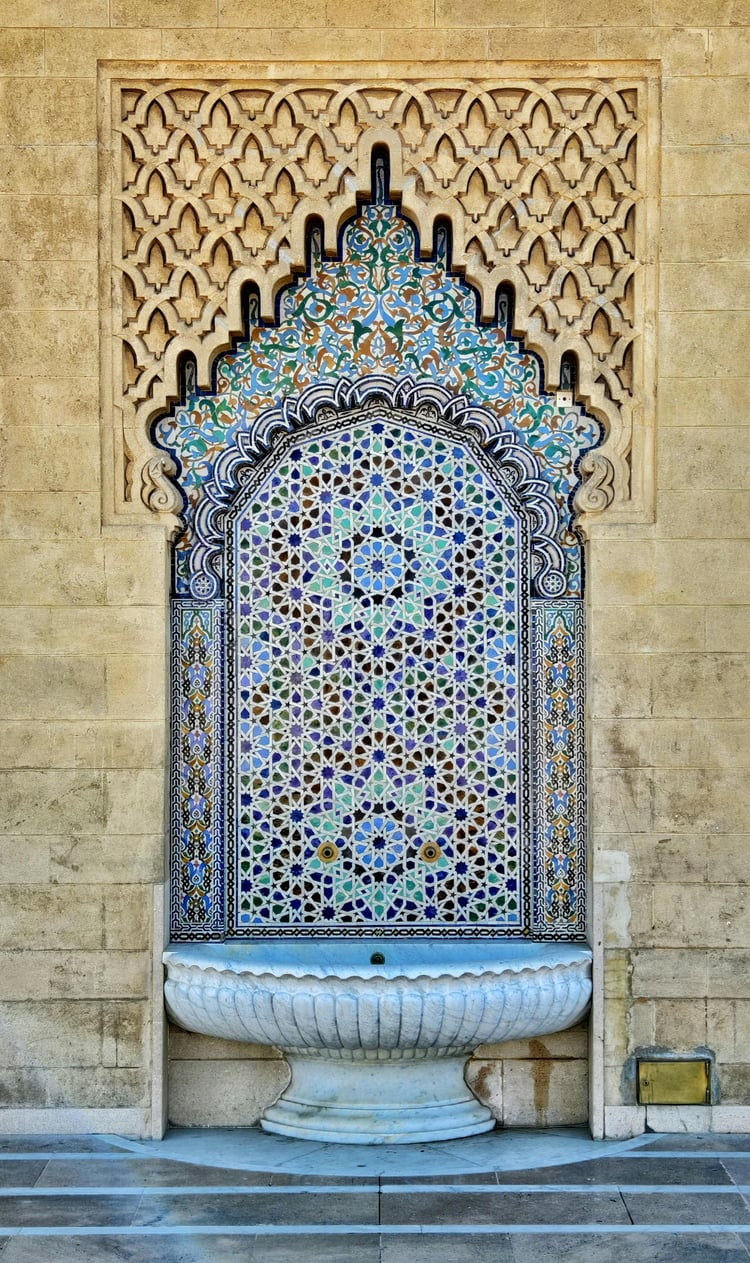
Conclusion: The Enduring Andalusian Imprint
The Andalusian influence on Moroccan culture and architecture represents one of history's most significant and enduring cultural transfers. What began as a refuge for displaced communities evolved into a profound cultural synthesis that has shaped Morocco's identity for centuries.
From the geometric perfection of zellij tilework to the haunting melodies of Andalusian orchestras, from the tranquil courtyards of traditional riads to the complex flavors of Moroccan cuisine, the Andalusian legacy lives on—not as a foreign import, but as an integral part of Morocco's cultural DNA.
For visitors to Morocco today, understanding this Andalusian connection offers deeper appreciation of what they see, hear, and taste. It reveals how cultures can blend and transform each other, creating something new and beautiful that transcends political boundaries and historical circumstances.


